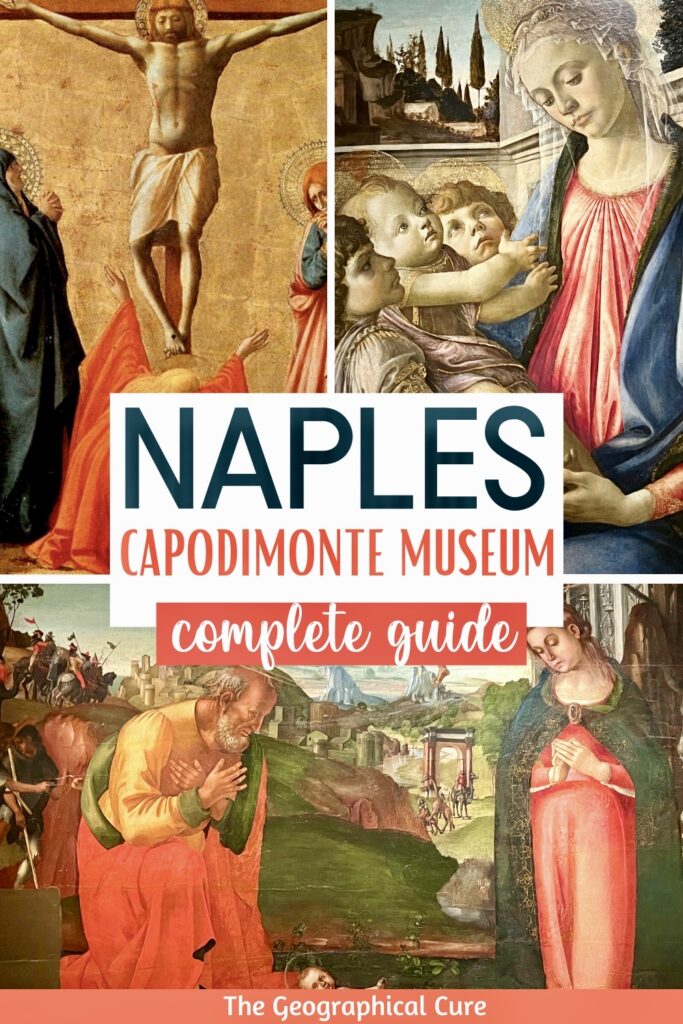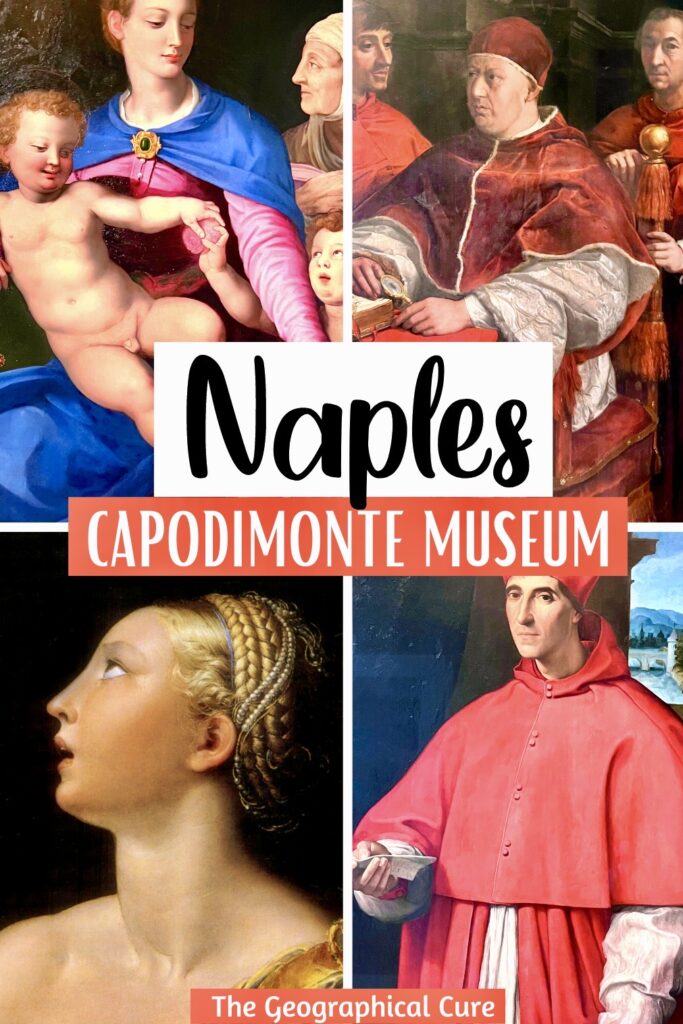Here’s my guide to visiting the Museo di Capodimonte in Naples. I give you an overview of the museum, describe the must see masterpieces, and provide must know tips for visiting.
The Capodimonte is one of the most important art museums in Italy and certainly the most significant in Naples. But it’s a “sleeper” and not as well known as other Italian art museums.
Yet, the Capodimonte is home to many of Italy’s greatest paintings! Truly. If you’re an art lover, it’s a must do in Naples.
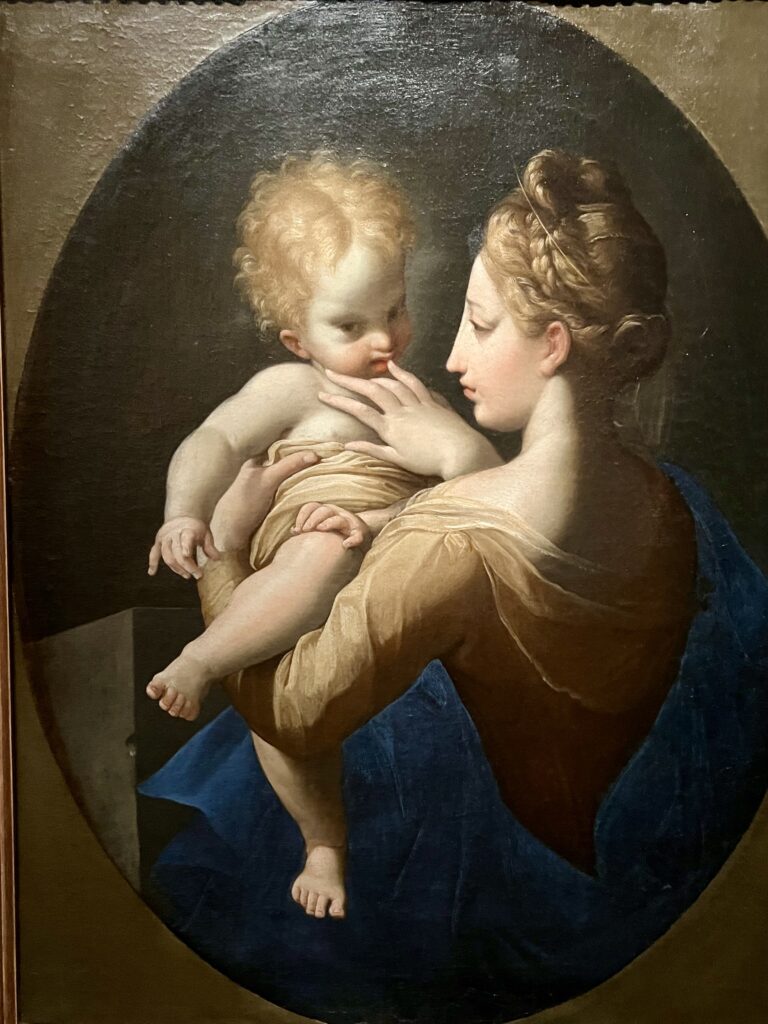
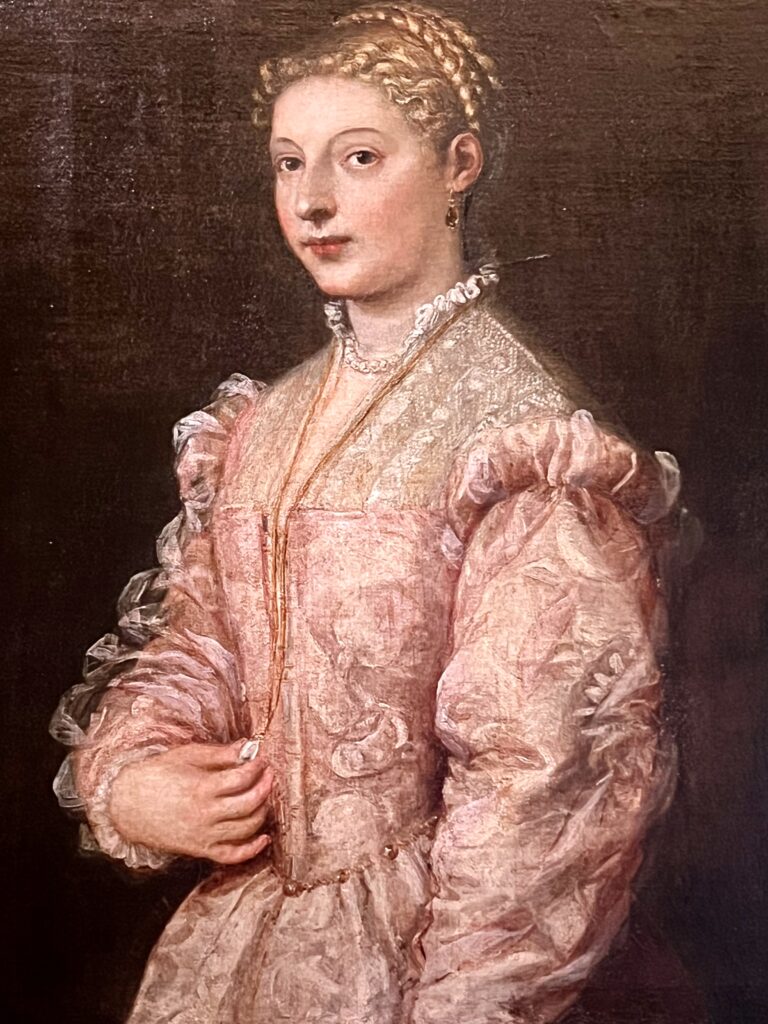
The Capodimonte is renowned for its extensive collection of Italian Renaissance and Baroque art. Over three floors, you’ll find works by famous artists such as Caravaggio, Titian, Masaccio, and Raphael. It’s just a notch down from the Uffizi Gallery, but has none of the crowds.
The Capidomonte is housed in an impressive 18th century building. It was originally a hunting lodge for King Charles VII of Naples and Sicily. It eventually evolved into a new palace for the king.
Plus, the king had just inherited one of the world’s largest art collections from his mother Isabella Farnese and he needed a place to stash the goods. One of Italy’s grandest dynasties, the Farnese family had accumulated the artworks over three centuries.
The palace and its contents eventually became the property of the state. The Museo di Capodimonte opened in 1957.
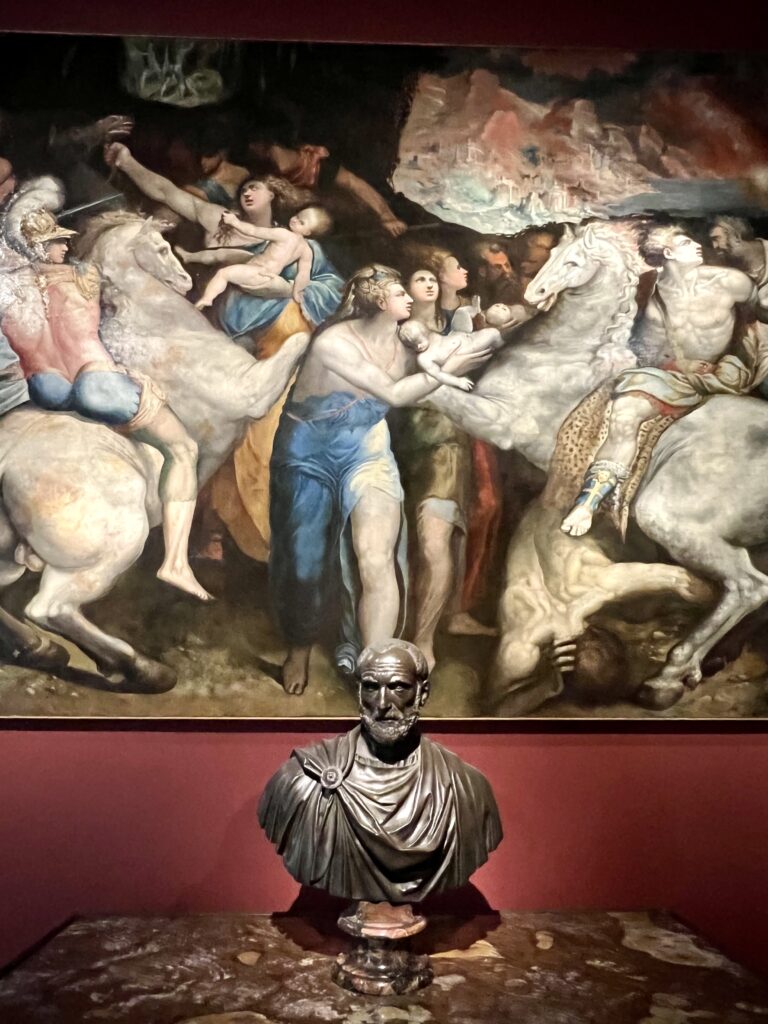
Overview & Tickets
To visit the entire Museo di Capodimonte, you’ll need to book a timed entry ticket.
You don’t need to pre-book a ticket to the first floor with the Renaissance masterpieces. You can walk in and buy a ticket at the ticket office, if it’s not high season.
But you will need to pre-book a timed entry ticket to the second floor. This is where the Baroque works, including the famous Caravaggio painting, are located. The modern works are housed on the third floor.
For a museum with significant masterpieces, the Capodimonte is a little old school. The walls are painted or wallpapered in dark colors and the lighting is poor and glaring.
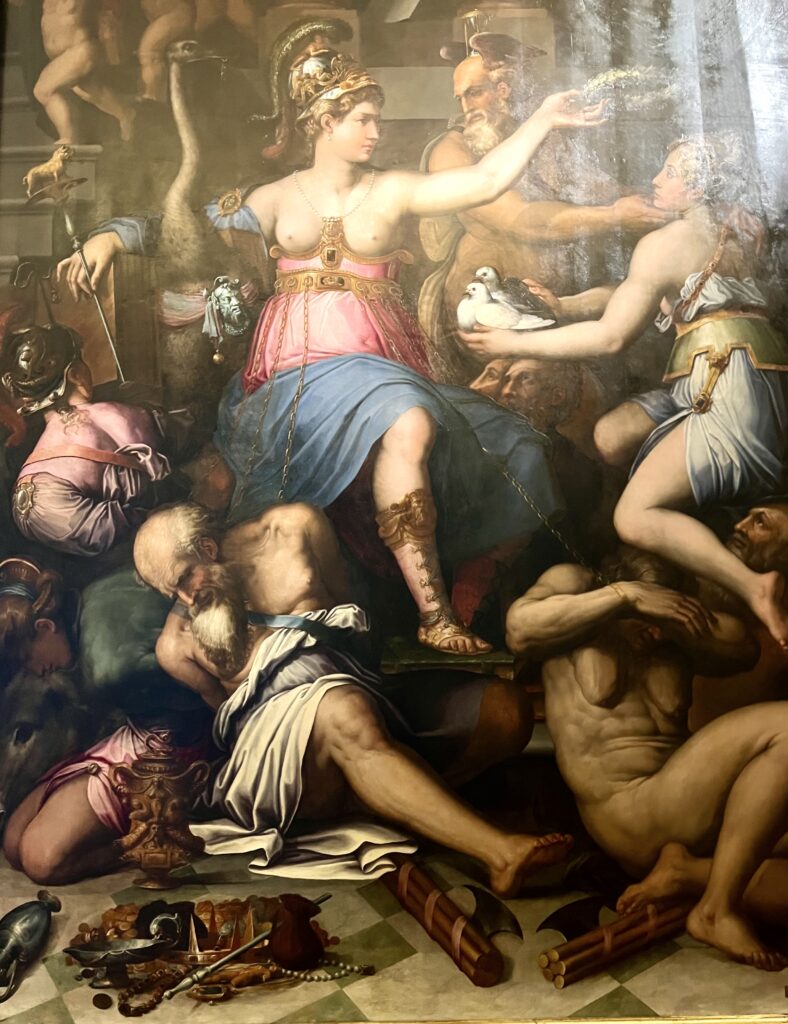
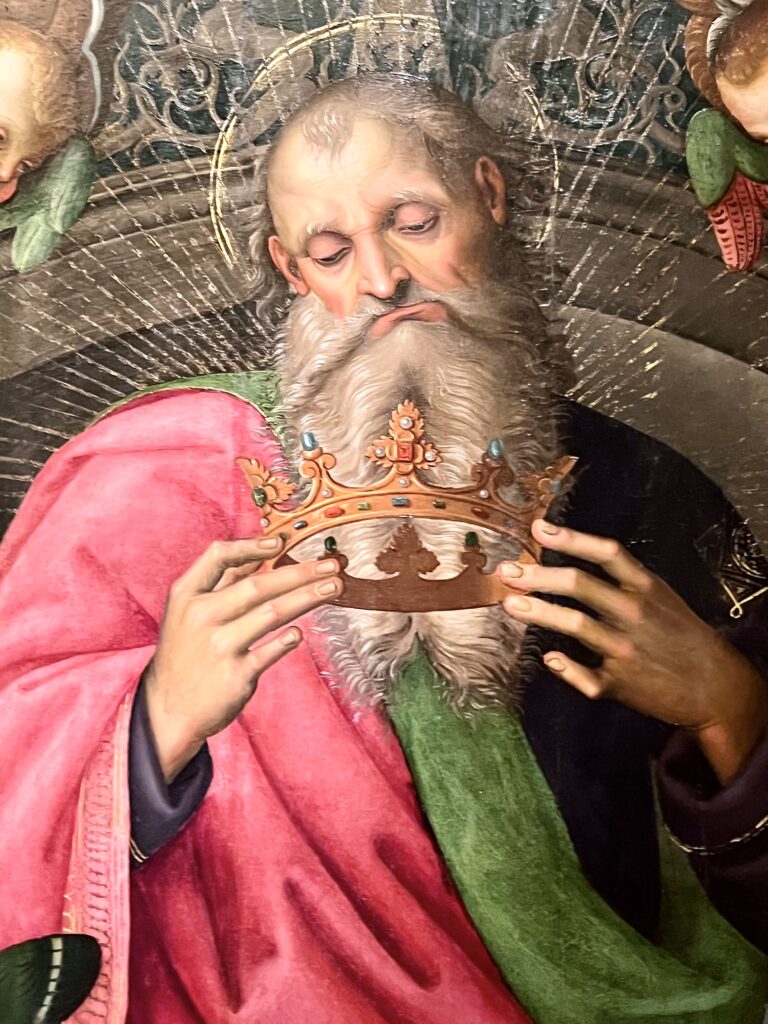
Ironically, the tall windows don’t improve the situation. If the shutters are closed, the rooms are dark. If they are open, the light shines on and obscures the paintings.
In addition, there are very few informational plaques. I would download the Capodimonte app before your visit.
It’s a large museum, with 160 rooms spread out over three floors. So, you’ll need to dedicate some time to see it all. If you’re limited, I would stick to the first floor.
Click here to book a skip the line ticket. Click here to book a guided tour of the museum.
Guide To The Museo di Capodimonte: Masterpieces To See
Here’s a rundown of the greatest hits of the Capodimonte.
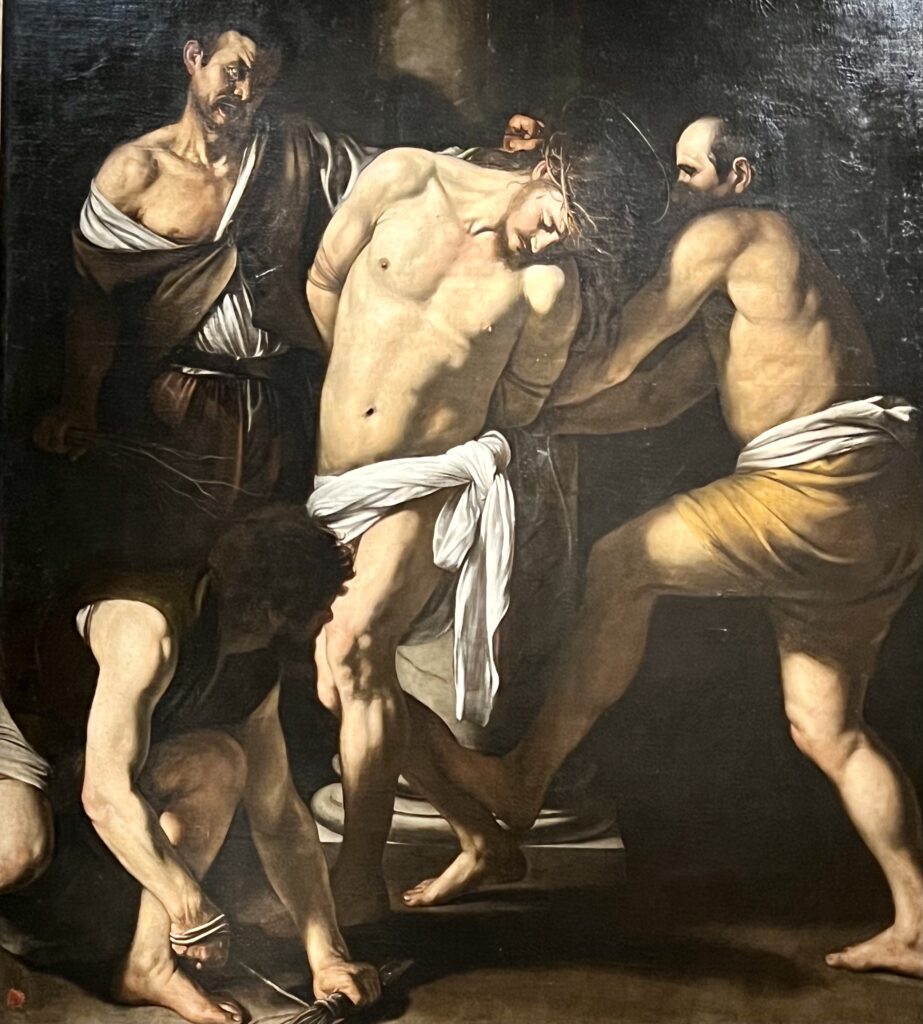
1. Caravaggio, Flagellation of Christ
The most celebrated painting in the Capodimonte is Caravaggio’s Flagellation of Christ. It hangs alone in Room 78.
It was painted while Caravaggio was a fugitive from the long arm of the law in Rome. He was also at the peak of his powers.
As is typical of Caravaggio, the large canvas presents a disturbing and emotionally intense image. It depicts the flagellation, or whipping, of Christ before his crucifixion. Caravaggio uses stark contrasts between light and dark, known as chiaroscuro, to create a sense of depth and drama that draws the viewer into the scene.
The image is set in a dark, dungeon-like space. The figure of Christ is shown with his hands bound and his torso partially exposed, highlighting the physical violence of the act.
Cruel and sinister looking torturers grab Christ by the hair. One of them tries to slam down Christ by jamming a foot into his calf.
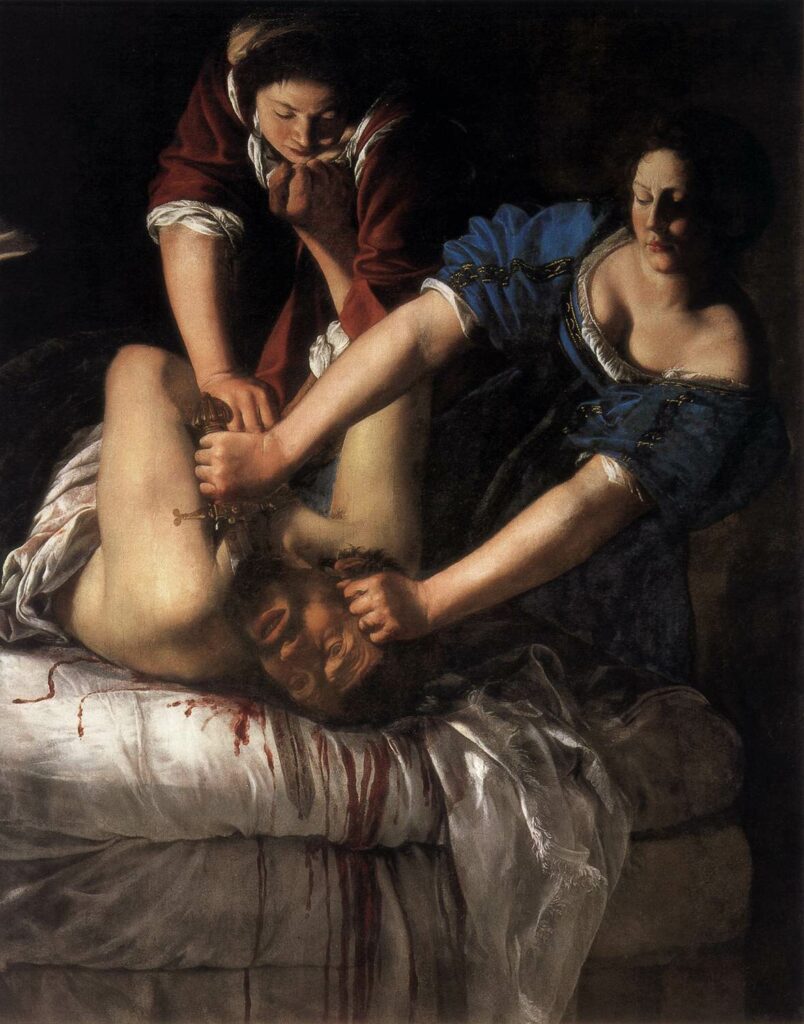
2. Artemisia Gentileschi, Judith Slaying Holofernes
This is a gory work by one of Caravaggio’s followers, the talented Artemisia Gentileschi.
There are several versions of this painting, which is of Judith beheading the Syrian general Holofernes. The most famous itineration is in the Uffizi Gallery.
Artemisia is known for her representations of strong women. The painting depicts the biblical story of Judith, a Jewish widow who seduced and beheaded Holofernes, an enemy general who threatened her people.
Judith doesn’t kill Holofernes silently. In premeditated fashion, she plots his death and drags her sword through his neck. Blood spurts, resulting in a visceral and emotionally charged painting.
The composition of the painting is dynamic, with dramatic lighting and intricate details underscoring the intensity of the moment. Gentileschi’s skillful use of chiaroscuro (the contrasting play of light and shadow) adds depth and drama to the scene.
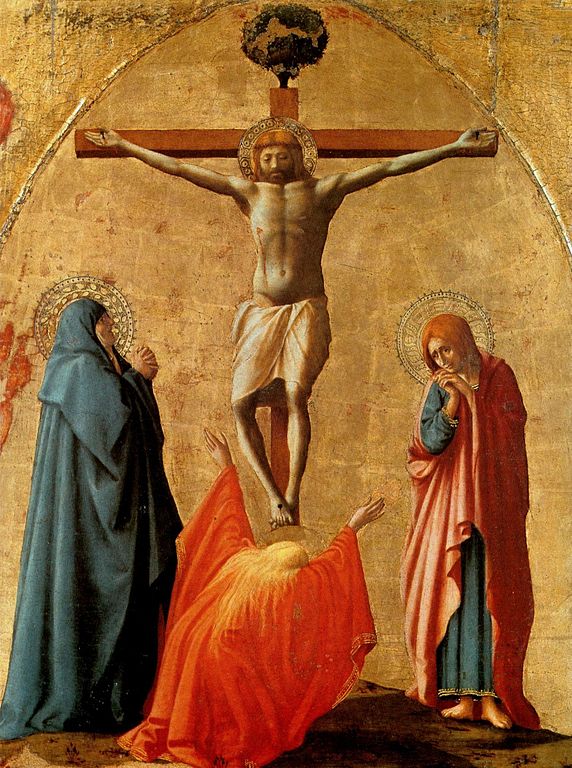
3. Masaccio, Crucifixion
Another masterpiece of the Capodimonte is Masaccio’s delicately rendered Crucifixion, also known as the Pisa Altarpiece. Masaccio is essentially the inventor of Renaissance painting.
In this panel painting on wood, Christ is on his cross with the Virgin Mary looking rather maternal in her statuary pose. Mary Magdalene is at the bottom positioned at Christ’s feet.
The painting is renowned for its use of perspective and for its dramatic emotional intensity, which was a hallmark of Masaccio’s style. You can almost feel its emotional pathos.
You also might be wondering, what happened to Jesus’ neck? It doesn’t seem to exist and looks rather jarring.
If you were viewing the original altarpiece, you’d be looking up at it. So, Masaccio altered the perspective to take this into account.
READ: Guide To The Brancacci Chapel
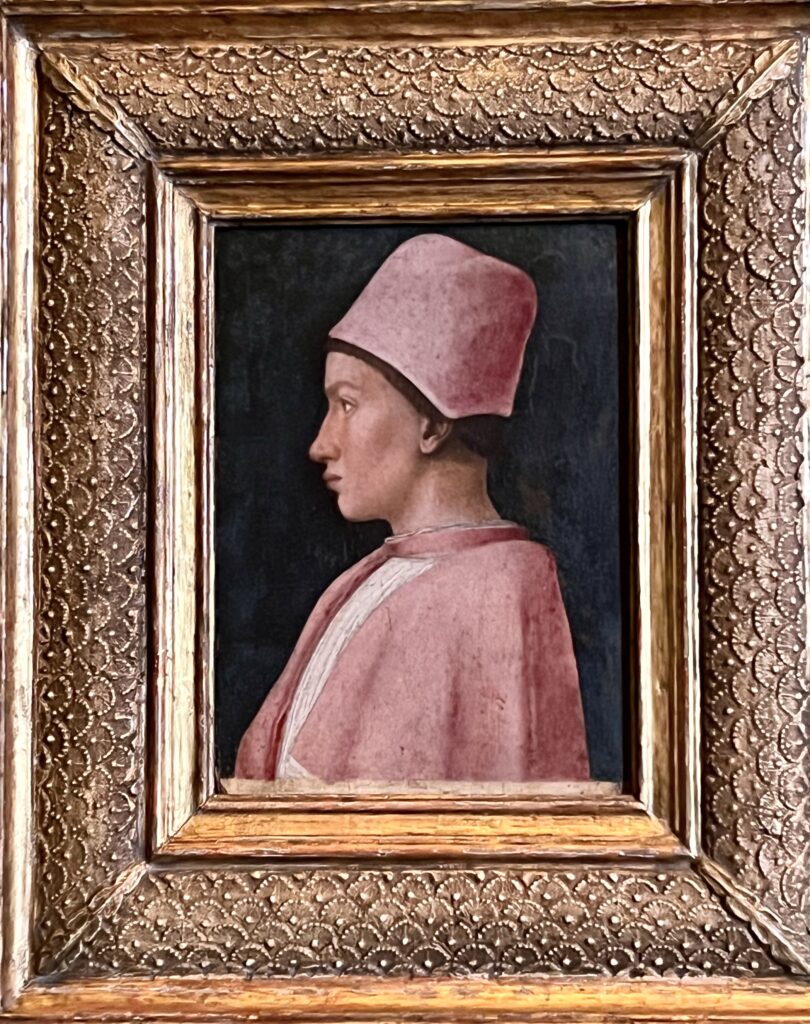
4. Andrea Mantegna, Portrait of Francesco Gonzaga
Mantegna was one of the most important artists of the Renaissance. His most famous work is the Camera degli Sposi in Mantua.
His Capidomonte painting is a tiny and exquisite portrait by Mantegna. Gonzaga was the second son of the marquis of Mantua. It’s one of Mantegna’s first works while serving as the official court artist of Mantua.
In this work, Francesco is dressed in the vestment of a cardinal (even though he’s only a boy). The portrait is in profile, in imitation of ancient coins of the emperor. That makes it an image of power.
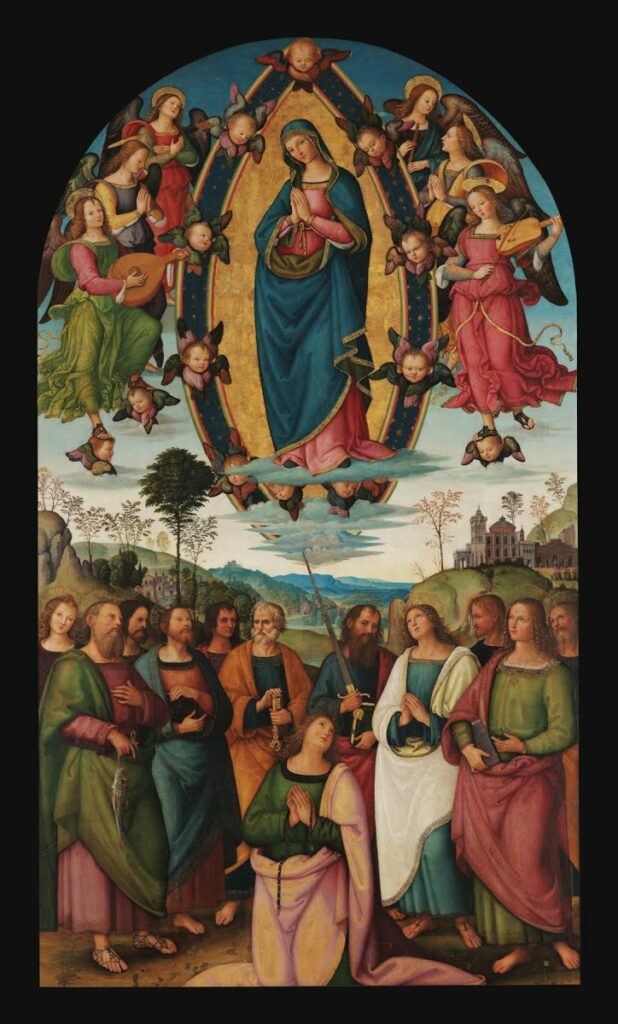
5. Pinturicchio, Assumption of the Virgin
Pinturicchio is an early Renaissance artist from Perugia. He was a student of Perugino at the same time as Raphael. His work is wildly popular in Italy.
This painting shows Mary’s assumption, the moment when she falls asleep and ascends into heaven. It looks very similar to a Perugino that was once the high altarpiece of the Sistine Chapel. Michelangelo then came along and took down Perugino’s painting.
It’s a beautiful portrait of the Virgin Mary. She has a full body halo and is surround by musical angels.
The apostles are down below bearing witness to the scene. There’s a tiny self portrait of Pintuicchio in the painting too.
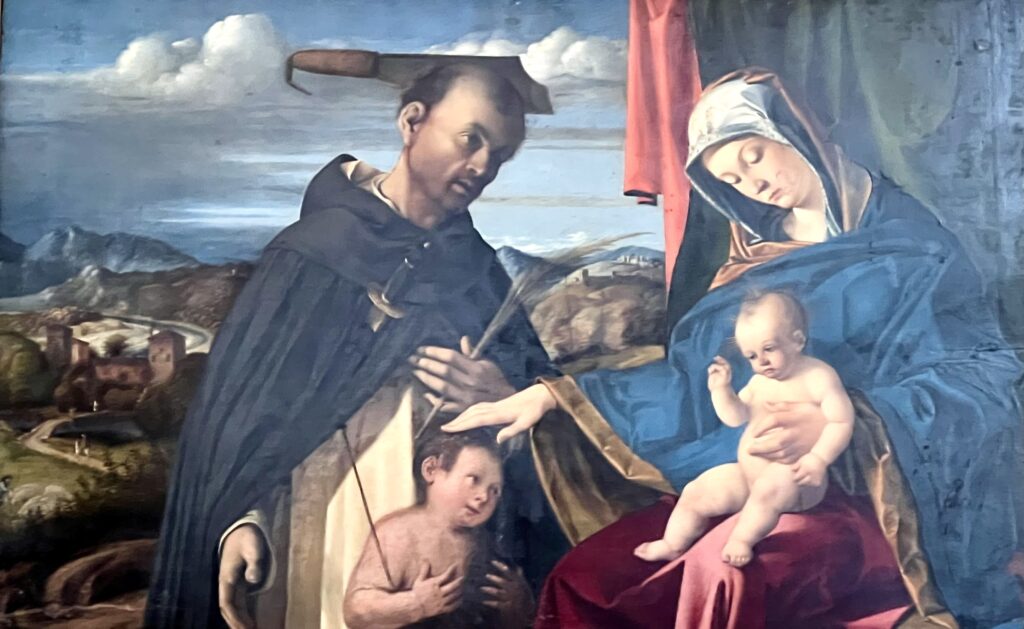
6. Lorenzo Lotto, Madonna and Child and St. Peter Martyr
Lorenzo Lotto is a Renaissance artist from Venice. He painted this canvas for a bishop who had survived an assassination attempt.
It’s one of the iconic representations of a saint in art history. You see St. Peter Martyr with a machete embedded in his head and a dagger sunk into his chest. According to legend, the saint was ambushed and killed outside Milan.
Peter was likely cleaved to death. He’s typically depicted with a blood stain on his head. This painting is a bit more … unusual … and graphic.
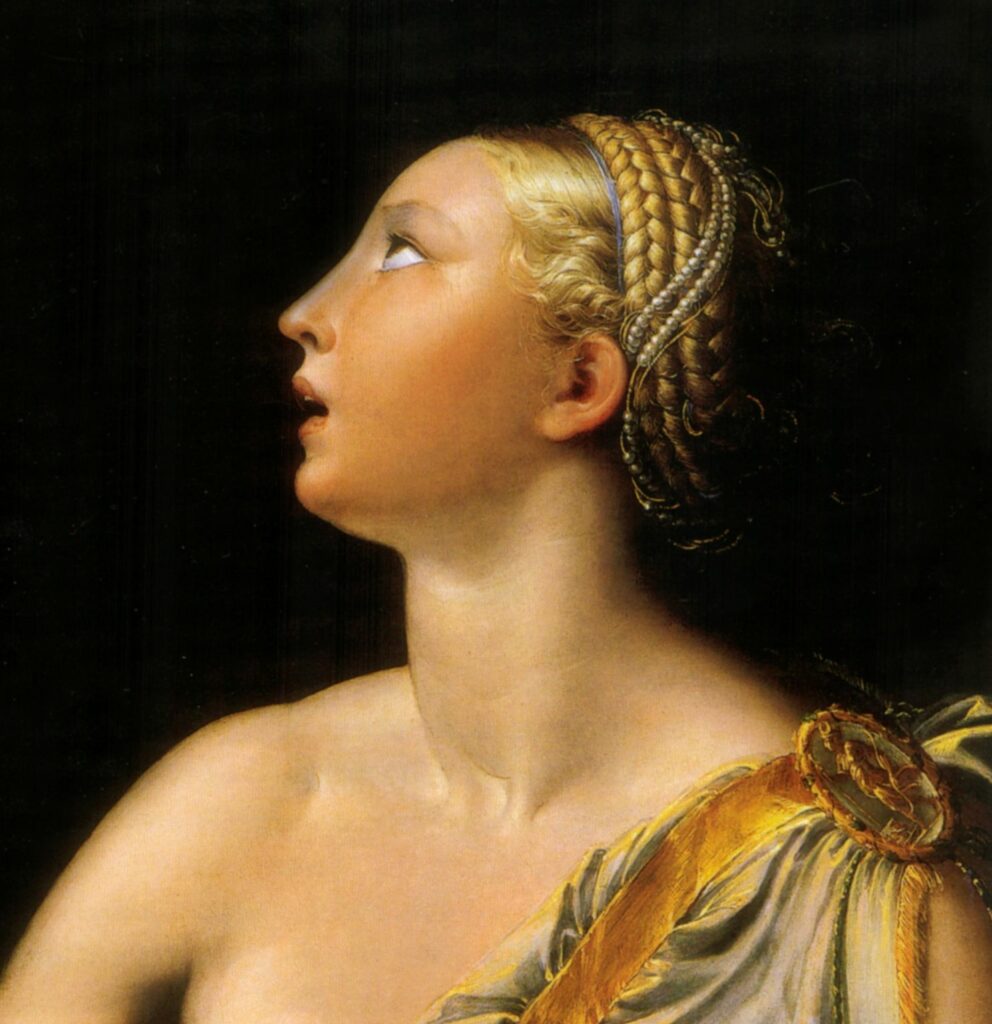
7. Parmigianino, Lucretia
This painting is simply gorgeous! Parmigianino is a Mannerist artist and this may be his final work. It’s an exercise in painting virtuosity.
READ: 13 Famous Italian Mannerist Artworks
The subject is Lucretia, the female martyr who’s death marked the end of the ancient Roman monarchy. She was raped by the son of the evil Tarquinian king.
She publicly denounced her rape and then killed herself. The Tarquin clan was then expelled and a republic installed.
It’s a dramatic image. The background is dark, setting off Lucretia’s luminous presence. She has blond hair into which pearls have been woven. Her complexion has a sheen or patina. She wear a toga with a single breast exposed.
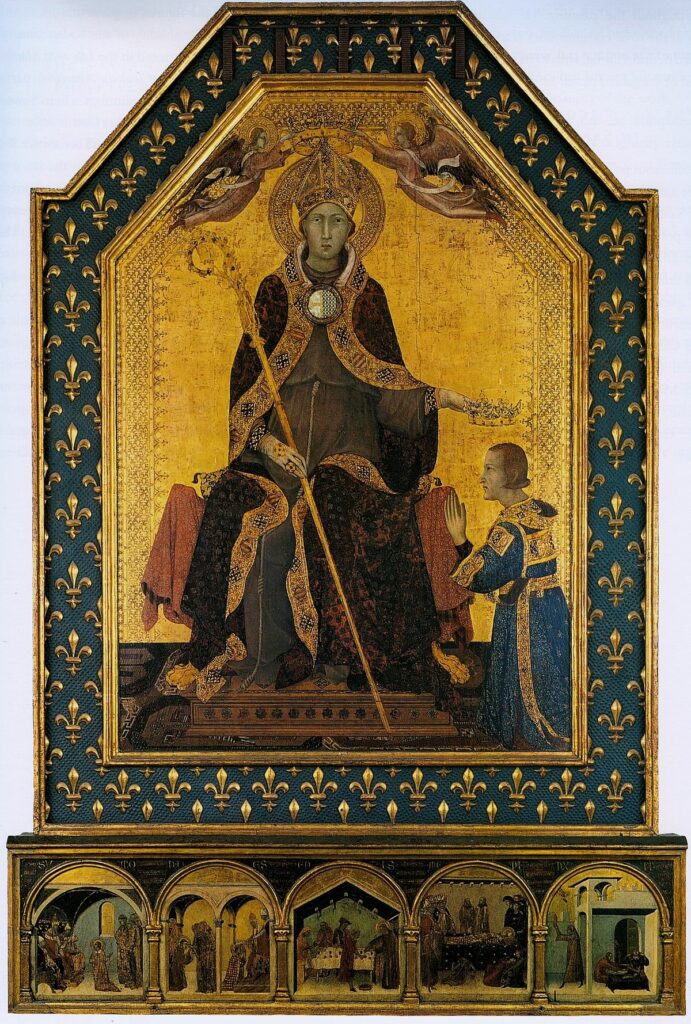
8. Simone Martini, Toulouse Altarpiece
This is a magnificent panel painting by the great Sienese painter Simone Martini. He was perhaps the second most important painter in Siena after the great Duccio.
There aren’t that many extant paintings by Martini. The one in the Capodimonte is perfectly preserved and authenticated.
The image is of St. Louis of Toulouse. He’s crowning his brother Robert the Wise of Anjou.
St. Louis is a giant heraldic figure. His brother is in coronation robes. He’s shown deferring to the saint and painted on a diminutive scale.
The lower part of the painting is a predella. It shows scenes from the life of the saint, including a posthumous miracle.
READ: 20+ Famous Medieval Paintings In Italy
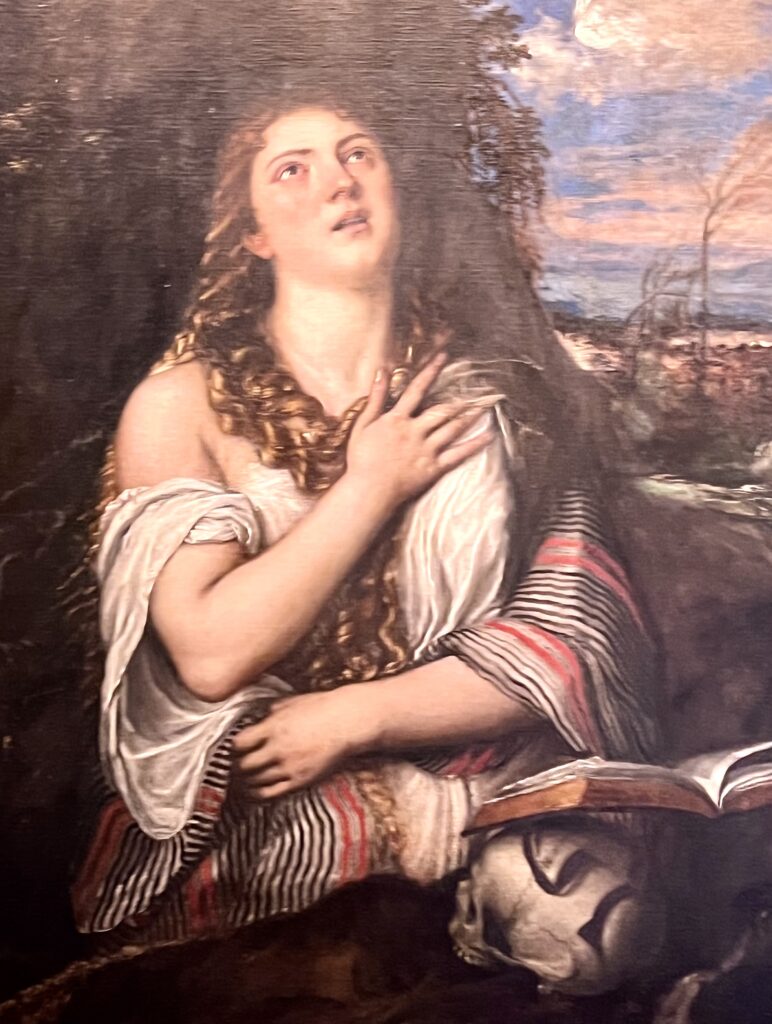
9. Titian, Penitent Magdalene
This is an image of the penitent Mary Magdalene. Titian painted it in the middle of his career. It’s one of seven versions that Titian painted. The most famous one is in Florence’s Pitti Palace.
Titian captures Mary in a moment of penance and reflection. Titian’s skillful use of color and light is evident in this painting.
The warm earthy tones of her skin and the vibrant red and white of her robe stand out against the dark background. The contrast between light and shadow accentuates her contemplative expression, conveying a sense of inner struggle and spiritual transformation.
Her generous body type is a Renaissance ideal. As usual, Mary has long luxuriant hair.
Unlike some depictions, she’s completely clothed. A similar version is in the Getty Center in Los Angeles.
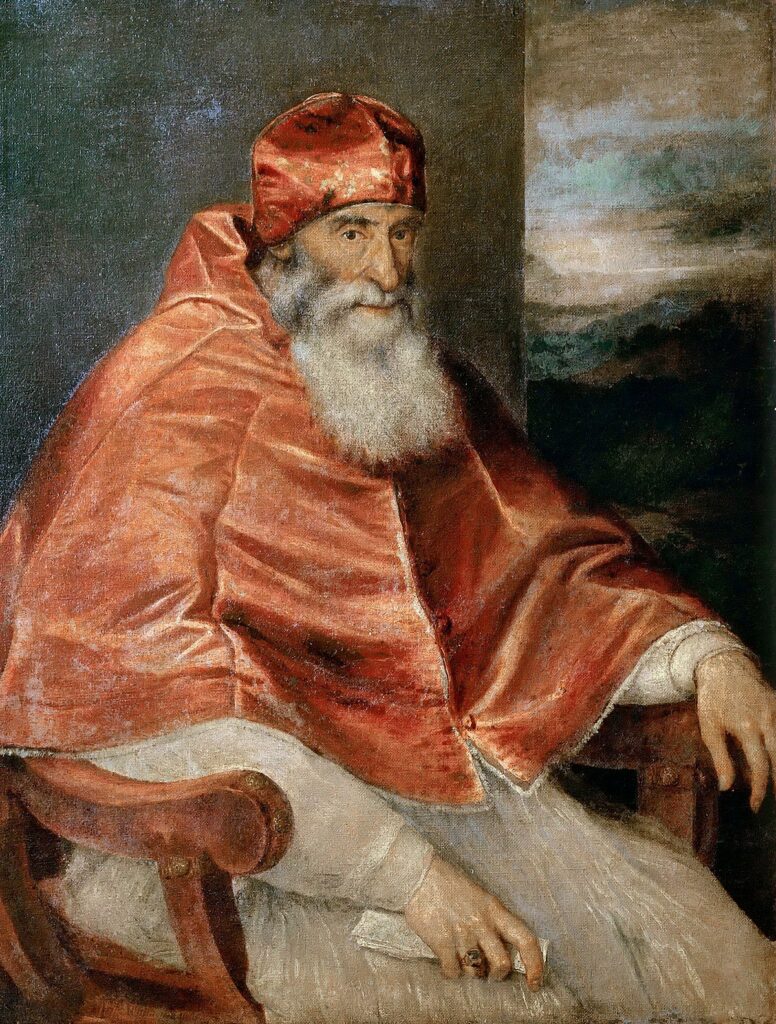
10. Titian, Portrait of Pope Paul III
This is one of Titian’s most celebrated works. It’s another gorgeous piece, which captured the essence of his sitter.
It’s a rather complex and sensitive portrait of Alexandre Farnese. He was elevated to the papacy in 1534. Nine year later, he invited Titian to join him in Bologna to paint his portrait.
The pope is wearing his hat. He’s in a 3/4 pose looking directly at the viewer. Though he’s 75 year old, he has a confident demeanor.
There’s another Titian portrait of Pope Paul III in the Capodimonte, this time shown with his nephews. It’s just 3 years after the first one, though he looks much older.
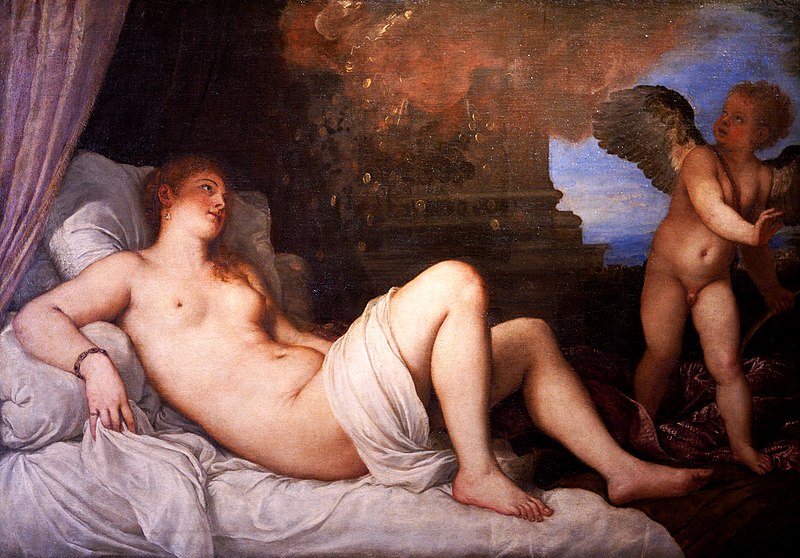
11. Titian, Danae
Danae is another famous masterpiece of the Capodimonte by Titian. This is the first of six versions of the subject that Titian painted.
This one was painted for the private chambers of Cardinal Alessandro Farnese and may be a portrait of his mistress Angela. It depicts a naked woman reclining languorously on an unmade bed. Her right hand rakes through a rumpled linen sheet.
It’s a rather erotic subject that may make you blush. What exactly is going on?
According to Greek myth, Danae is locked up by her father, the king of Argos. He did this to prevent the prophecy that he would be killed by his own grandson.
Despite this safeguard, Danae’s beauty caught the eye of Zeus. He transformed himself into a golden shower to seduce Danae. On the painting, a shower of gold drops into Danae’s open lap. She then gives birth to Perseus, who does indeed kill his grandfather.
The subject of Danae allowed Titian to explore themes of love, desire, and the relationship between mortals and gods. His portrayal is celebrated for its psychological depth and sensual allure, making it an iconic representation of the mythological princess.
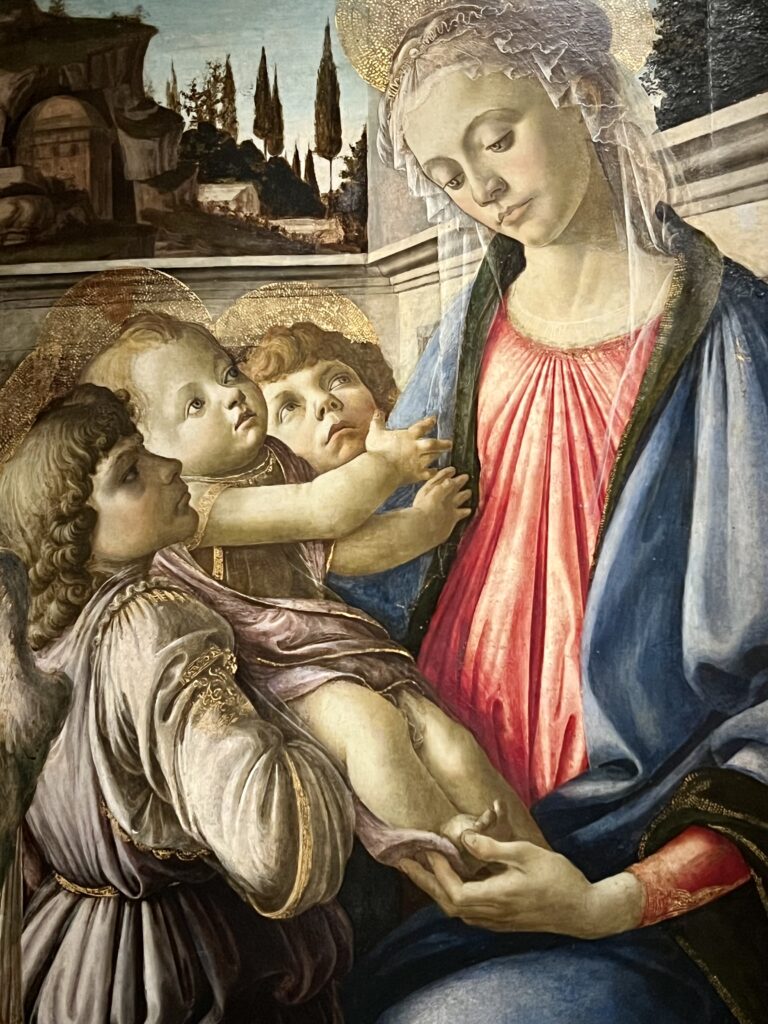
12. Sandro Botticelli, Virgin and Child with Two Angels
Botticelli was one of the premiere artists of the early Renaissance. This famous Botticelli painting at the Capodimonte depicts the Virgin Mary holding the infant Jesus, while two angels stand on either side of them.
The figures are depicted in Botticelli’s signature graceful style, with delicate features and flowing garments.
The colors used in the painting are also characteristic of Botticelli’s oeuvre. The soft pastel tones have a luminous quality.
The painting was originally commissioned by the Vespucci family in Florence. It later passed through the hands of several prominent collectors before eventually being acquired by the Capodimonte.
READ: Guide To Botticelli’s Paintings In Florence
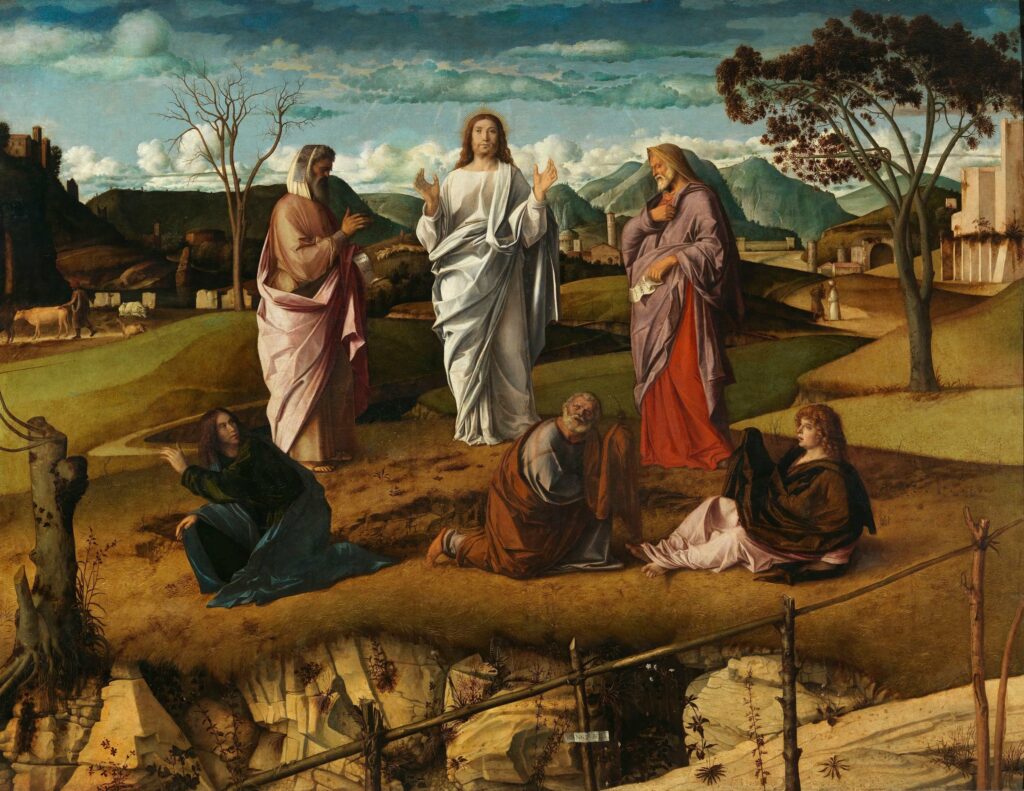
13. Giovanni Bellini, Transfiguration of Christ
Bellini’s Transfiguration of Christ is a significant example of late Venetian Renaissance art in Italy. It showcases the sublime artist’s mastery of technique and composition.
The painting’s delicate brushwork and luminous colors are characteristic of Bellini’s style. The landscape and figures in the painting reveal his interest in naturalism and attention to detail.
Christ is depicted with a radiant face, emanating light that illuminates the surrounding landscape and figures. The lack of a halo is notable, as it diverges from traditional iconography of the Transfiguration. Typically, Christ is depicted with a halo and surrounded by mandorlas or aureoles.
READ: Guide To the Galleria dell’Accademia in Venice
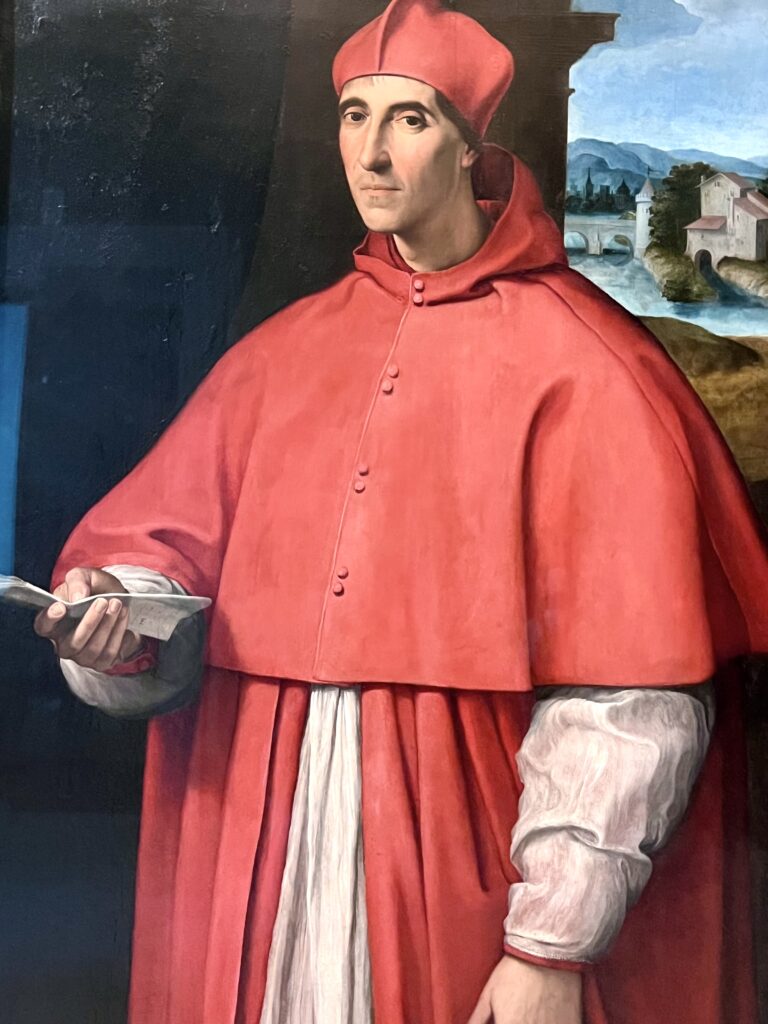
14. Raphael, Portrait of Cardinal Alessandro Farnese
This Raphael portrait is one of the most famous paintings in the Capodimonte. It’s also known as the Farnese Pope and is a magnificent work of Renaissance portraiture. It depicts Cardinal Alessandro Farnese, who later became Pope Paul III.
The portrait exemplifies Raphael’s refined style and attention to detail. The cardinal is depicted in his official ecclesiastical attire. His expression reflects both wisdom and authority.
The painting showcases Raphael’s ability to capture the personality and individuality of his subjects, elevating portraiture to an art form. The subtle play of light and shadow, the intricate details of the cardinal’s garments, and the skillful rendering of facial features are all hallmarks of Raphael’s artistic mastery.
READ: Guide To Raphael’s Paintings
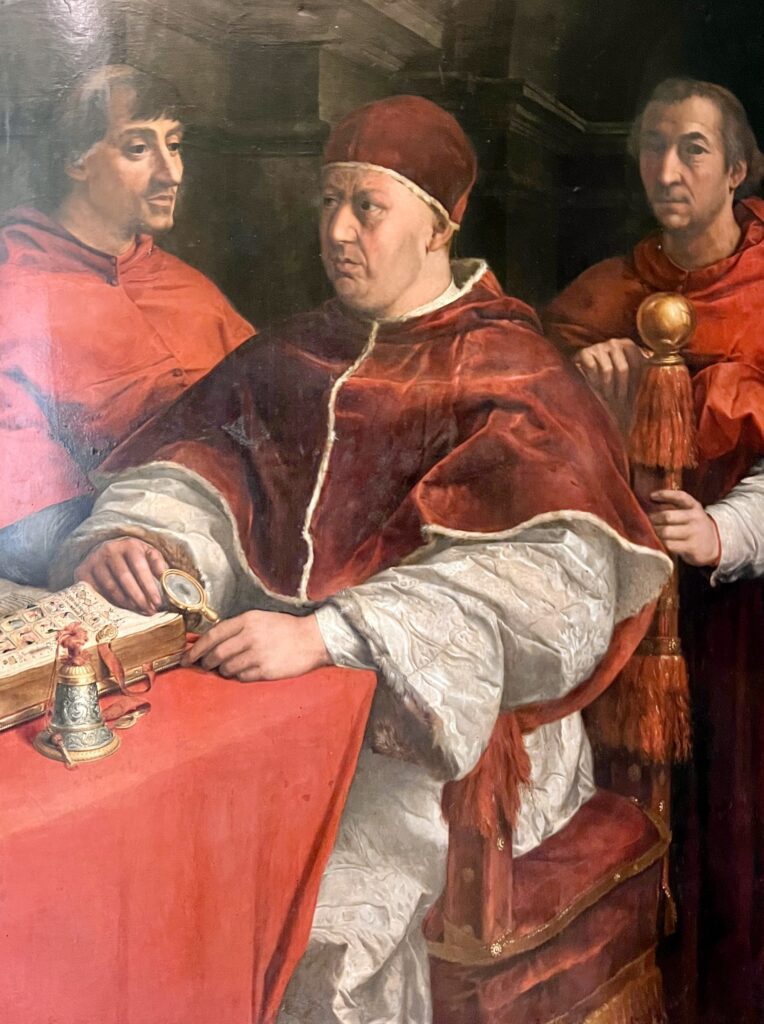
15. Andrea del Sarto, Portrait of Pope Leo X with Two Cardinals
In this portrait, del Sarto paints Pope Leo X. He’s seated in a 3/4 profile, directing his gaze to the left. Accompanying him are two relatives, Cardinal Giulio de’ Medici on the left and Cardinal Luigi de’ Rossi on the right.
Leo X holds a magnifying glass, near an illuminated bible and a bell resting on the table. The pommel on top of the Pope’s chair features the balls emblem, representative of the Medici coat of arms.
Andrea del Sarto painted this work as a copy of Raphael’s original portrait (now in the Pitti Palace), under the commission of Ottaviano de’ Medici. Pope Clement VII, portrayed in the painting as Cardinal Giulio de’ Medici, requested Ottaviano to send the portrait to Duke Federico Gonzaga in Mantua.
Unwilling to part with Raphael’s original, Ottaviano cleverly sent Andrea del Sarto’s copy instead, avoiding detection. Giorgio Vasari’s renowned book, Lives of the Artists, contains detailed accounts of this dramatic event.
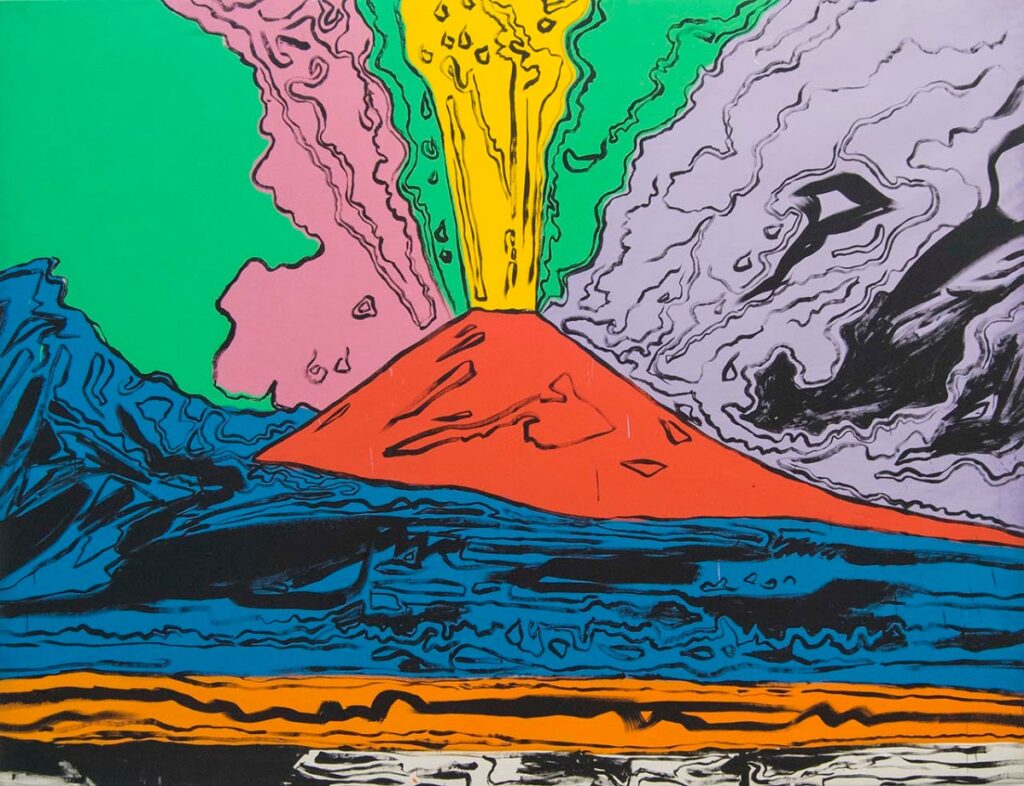
16. Andy Warhol, Vesuvius
Andy Warhol was the Prince of Pop and launched the Pop Art movement in the 1960s. The Capodimonte’s Warhol painting captures the ominous presence of the legendary Neapolitan volcano, Mount Vesuvius.
Through vibrant Pop Art colors, it conveys the sense of impending destruction. The painting portrays a dynamic eruption, rendered in a striking yellow hue, juxtaposed against vivid plumes of bubble gum pink and teal green smoke.
The volcano’s silhouette evokes a mix of both awe and trepidation. The viewer is immersed in the raw energy and potential devastation associated with this iconic natural wonder.
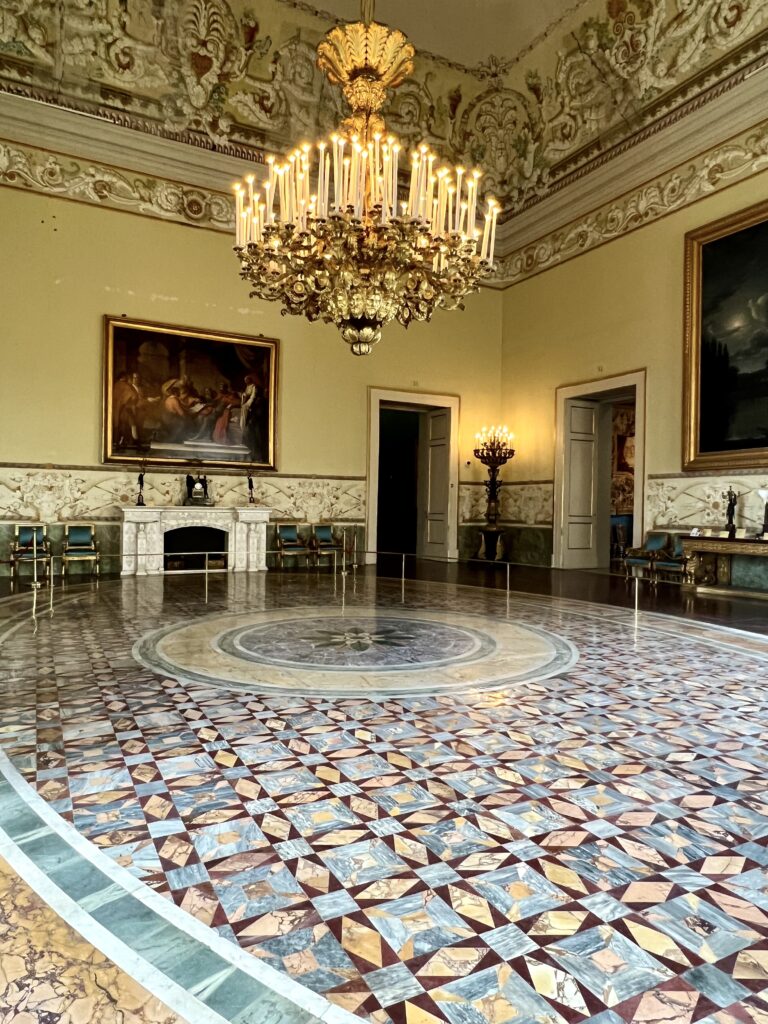
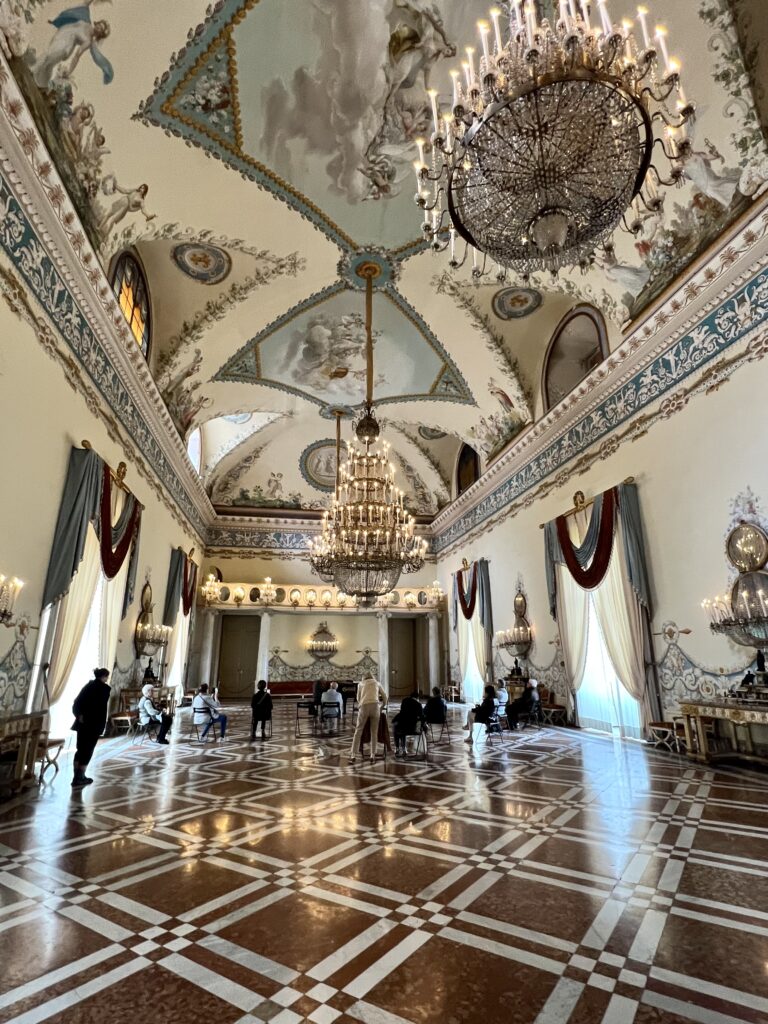
17. Royal Apartments
The Capodimonte also is also home to the royal apartments, consisting of 30 or so rooms. They showcase an outstanding range of European decorations arts.
You’ll find paintings, furnishings, ceramics, and a cascade of other treasures. There are over 3,000 porcelain objects, a result of Charles III’s obsession with ceramics.
The rooms you can’t miss are the ballroom, the dining room, the porcelain room, the armory, and the queen’s chamber.
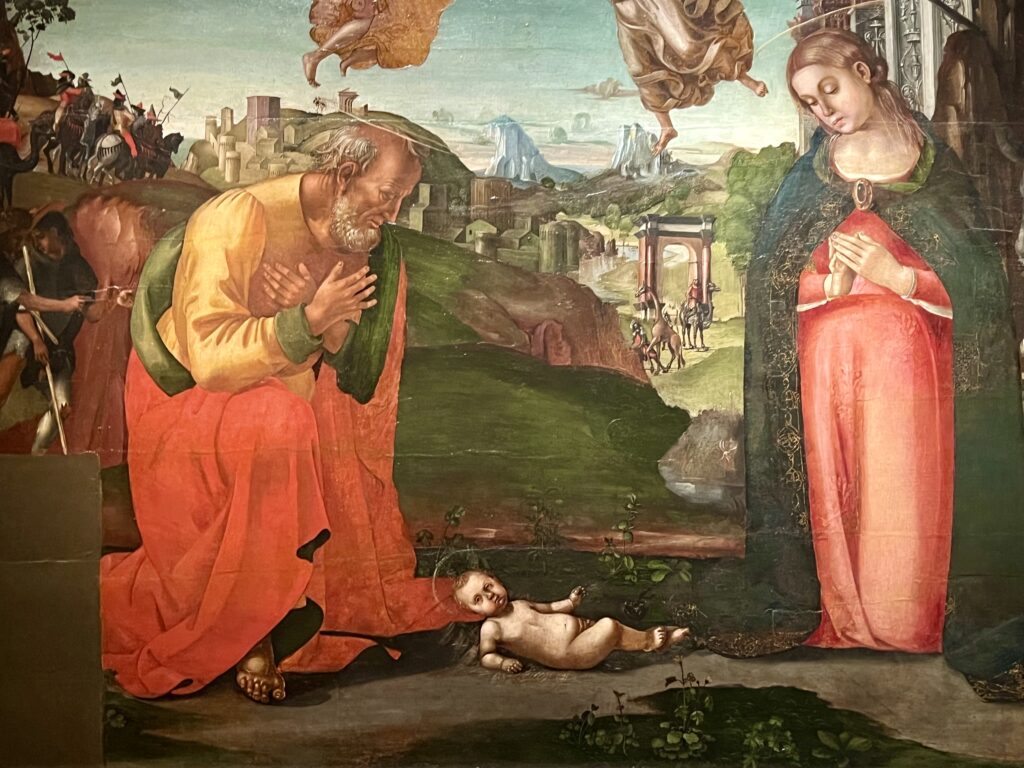
Practical Guide & Tips For The Capodimonte Museum
Here are some must know tips for visiting the Capodimonte Museum
1. How To Get To The Museo di Capidomonte
The Capidomonte is off center in the north of Naples. It’s not super convenient to get to. This likely accounts for it being undervisited.
To reach the museum, you can take the Metro Line 1 to the Museo stop and then transfer to a bus or taxi. Alternatively, you can take a taxi or a bus directly from Piazza Dante From the bus stop, it’s just a short walk to the museum.
You can also walk from the city center. From Piazza Bellini, it’s a little less than 2 miles. So, it would take you 30-40 minutes to walk there.
If you opt for walking, on your way, you can walk down Via dei Tribulani, a lively picturesque street, and through Piazza Dante.
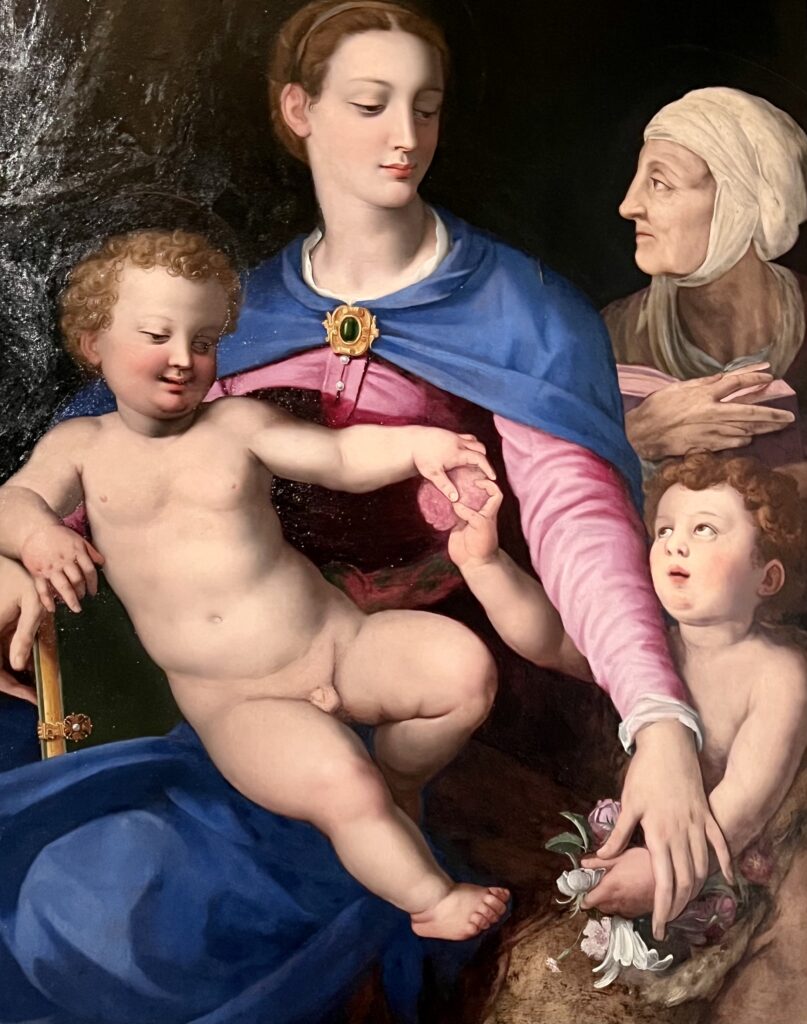
If you are driving, the museum also has a dedicated parking lot. There’s also a taxi stand just a couple minutes from the museum if you want to taxi back to the city.
2. Tickets & Tours
Click here to book a skip the line ticket. Click here to book a guided tour of the museum.
Ticket are 15 euros. If you are a citizen of the EU and 18-25 years old, the price is 13 euros and under 18 is free.
3. Opening Hours:
The Museo di Capodimonte is open from 8:30 am to 7:30 pm. The ticket office closes at 6:30 pm. The second floor can only be visited between 10:00 am and 5:30 pm.
The museum offers guided tours at 10:00 am, 12:00 pm, 3:00 pm, and 5:30 pm.
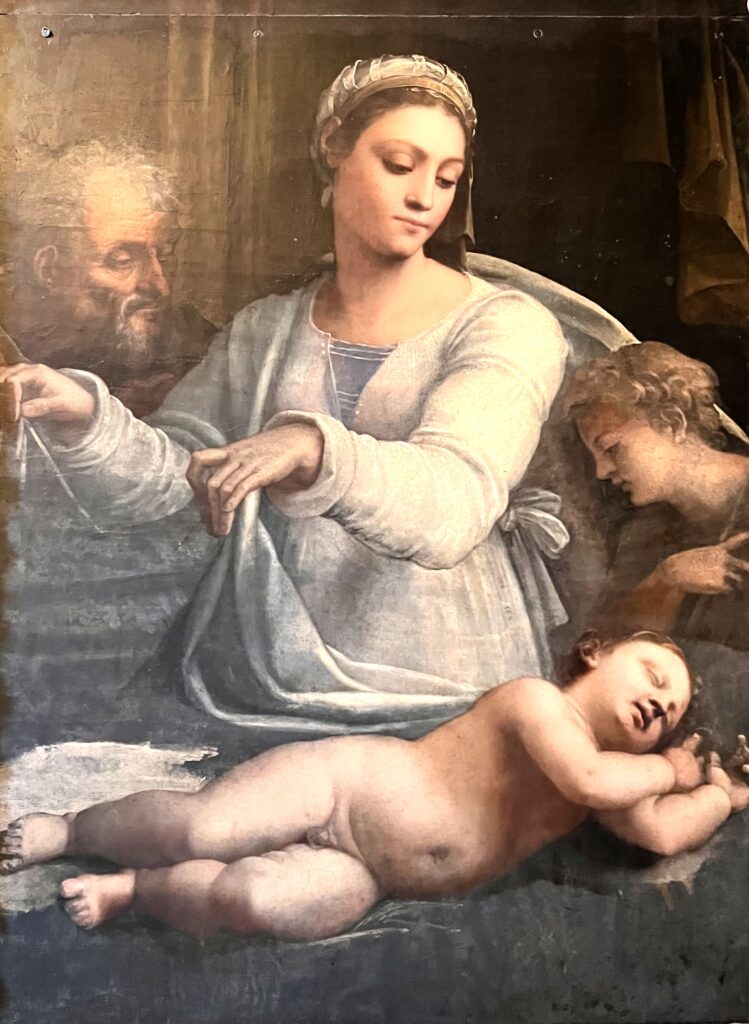
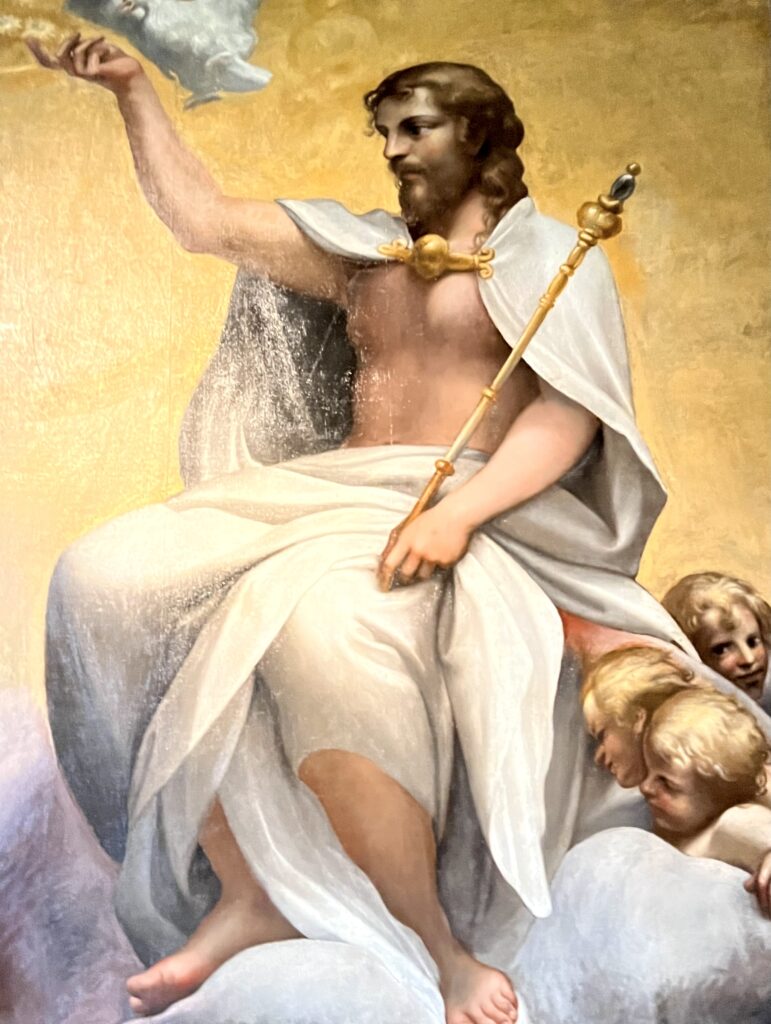
4. Facilities at the Museum
There are two cafes at the Capodimonte. One is near the museum entrance. It’s essentially fast food Italian style. The other one is a nicer sit down cafe and on the grounds.
The rest rooms are inside the vast palace courtyard. You’ll have to look around for the sign.
5. Other Pro Tips:
If you are visiting the Capidomonte just to see the Caravaggio, check to make sure it’s at the museum. Recently, it was on loan to a museum in Rouen France. Currently, it’s at an exhibition at the Royal Palace in Naples.
A visit to the Capodimonte can also be combined with a visit to the Catacombs of San Gennaro. They are only a 5-10 minute walk away.
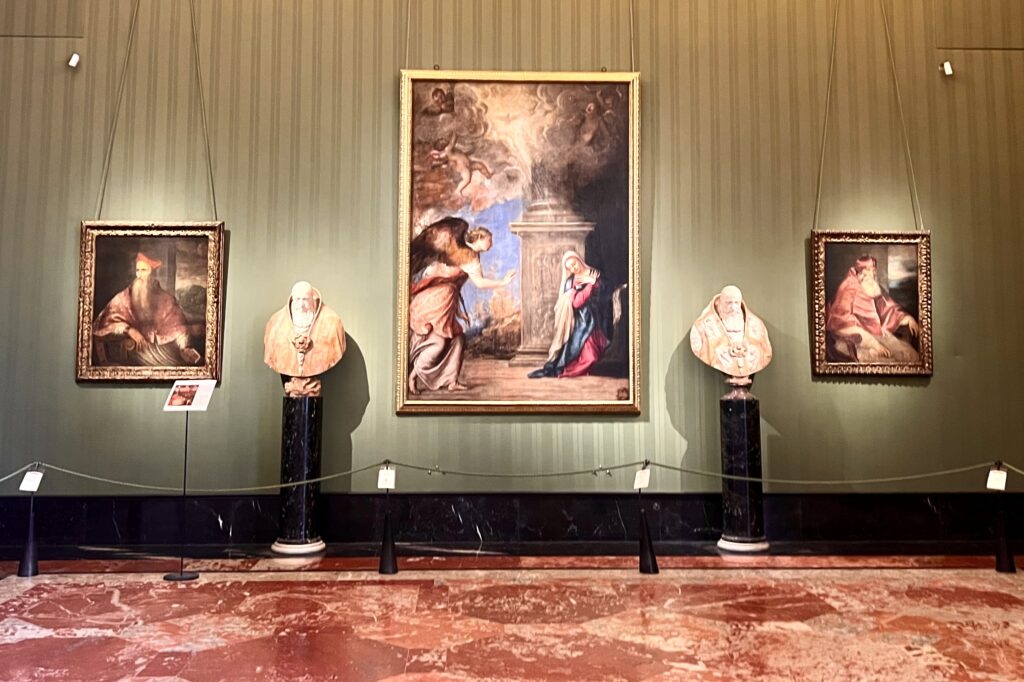
You can also visit the Mussolini-era church commonly known as the Church of Madre del Buon Consiglio or the Church of the Mother of Good Counsel. It was commissioned and built during the fascist regime under Benito Mussolini in the 1930s.
6. Is the Capidomonte Worth Visiting?
100% yes. If you are an art lover, the Capodimonte is an absolute must do in Naples. It’s one of the top museums in Italy and well worth the detour north.
Even if you’re not obsessed with art, you can enjoy the royal palace and apartments and the wonderful views from the park.
I hope you’ve enjoyed my guide to the Capodimonte Museum. You may enjoy these other Italy travel guides and resources:
- 3 day itinerary for Rome
- 5 day itinerary for Rome
- 1 day itinerary for Vatican City
- 3 day itinerary for Florence
- 2 day itinerary for Venice
- 1 day itinerary for Milan
- 1 day itinerary for Siena
- One week in Umbria
- 10 days in Italy itinerary
- 10 day itinerary for Tuscany
- 12 ways to spend 1 week in Italy
- 2 weeks in Sicily itinerary
If you’d need a guide to the Capodimonte Museum in Naples, pin it for later.

